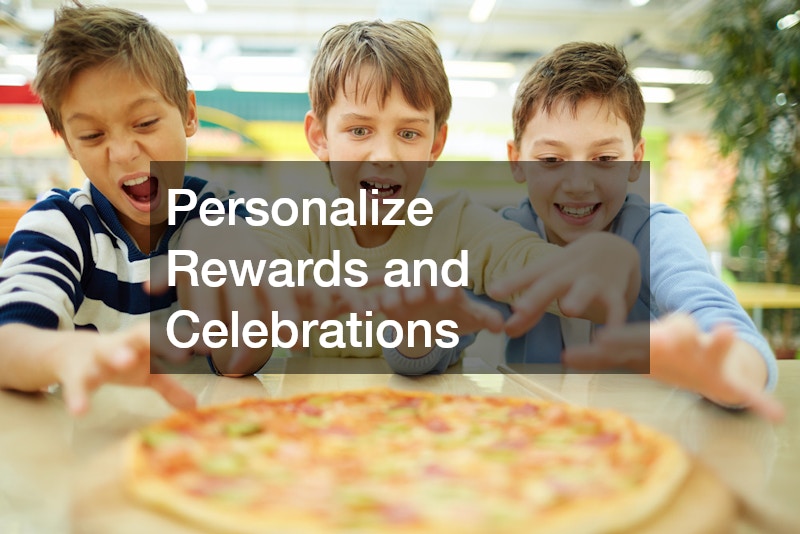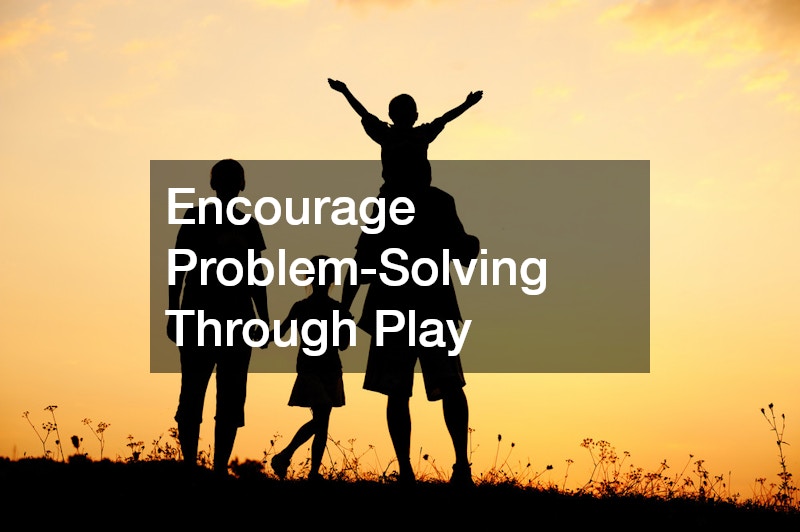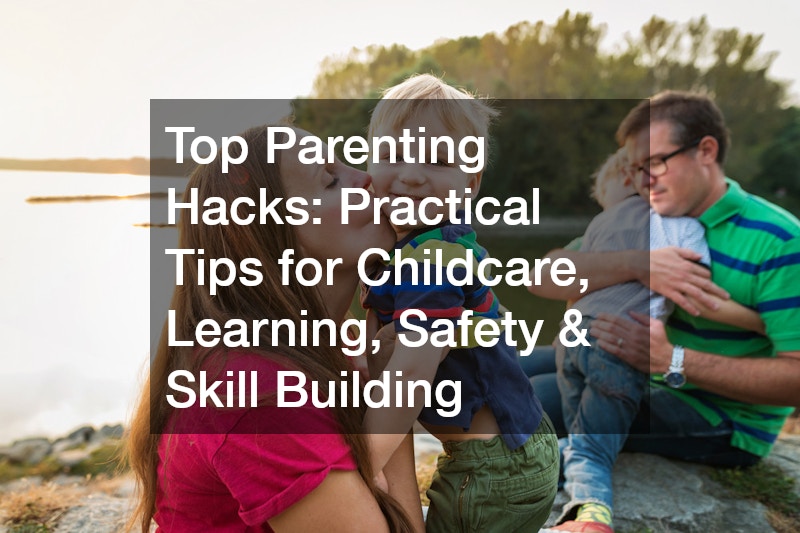Surprisingly Fun Parenting Hacks
Parenting is a journey filled with surprises, challenges, and unexpected joys. As parents, we often search for creative ways to keep children engaged while balancing household responsibilities and personal time. From clever household tricks to imaginative play, there are countless methods to make parenting not only manageable but also fun for both adults and kids. Finding new strategies can turn everyday routines into exciting experiences, creating memories that last a lifetime.
1. Turn Activity Planning Into a Seasonal Adventure

Parents can make the most of their children’s free time by turning activity planning into an exciting seasonal adventure. For example, summer can be an excellent opportunity to mix structured and spontaneous experiences. Enrolling children in summer camps allows them to explore new interests, develop social skills, and discover talents in a safe and engaging environment. By presenting these opportunities as adventures, children are more likely to participate enthusiastically and remain motivated throughout their stay. When selecting programs or activities, involve your children in the decision-making process. Ask about their interests, favorite hobbies, or subjects they want to explore, and use their input to design weekly or monthly activity schedules. Creating visual calendars with colorful stickers or illustrations can make planning tangible and fun, turning expectations into exciting milestones. Parents can also mix outdoor and indoor activities to provide variety and prevent boredom. Beyond structured camps, spontaneous outings like nature walks, local art exhibits, or community events can add excitement to your child’s routine. Framing these experiences as explorations or mini-adventures encourages curiosity and engagement. Children are more likely to approach new activities with enthusiasm when they feel ownership over the planning process. Ultimately, seasonal adventure planning fosters creativity, learning, and family bonding, while helping children develop a sense of independence. Summer camps provide a perfect foundation for these adventures, giving kids opportunities to learn, grow, and thrive during their most carefree months.
2. Make Mealtime a Family Game
Mealtime can often feel like a chore, but with a little creativity, it can become a fun and interactive family activity. Turning meals into a game can encourage children to try new foods, improve table manners, and foster positive relationships around the dining table. Parents can use imaginative approaches such as “mystery ingredients” or “taste-test challenges” to make eating exciting and engaging. Local pizza restaurant visits can also serve as a reward or fun outing, giving children the opportunity to explore different toppings and flavors while reinforcing mealtime enjoyment. Setting up playful routines at home can include creating themed dinners or allowing children to design their own plate combinations. Use timers or friendly competitions to make cooking or setting the table an interactive experience. These techniques can teach responsibility and teamwork while keeping the experience lighthearted. Parents may also incorporate learning elements, such as counting slices or identifying colors and textures in meals. Another strategy is to involve children in meal preparation. They can assist with mixing, chopping under supervision, or arranging toppings creatively. Engaging in the process fosters a sense of accomplishment and encourages curiosity about food. Over time, this approach can reduce mealtime battles and make children more willing to try new dishes. Combining local pizza restaurant experiences with home cooking adventures ensures a balance of structured outings and playful home routines that keep mealtime enjoyable for the whole family.
3. Create a Mobile Fun Zone
Parents can transform everyday transportation into an opportunity for play and connection. For example, riding around in a luxury golf cart offers children a sense of novelty and excitement while allowing parents to stay engaged. These small changes in routine can spark imagination, conversation, and enjoyment during errands or outdoor adventures. Incorporating mobile fun zones doesn’t have to be expensive or complicated. Even brief trips to local parks, nearby trails, or community centers can be enhanced with playful elements, such as storytelling, scavenger hunts, or interactive games during transit. Children enjoy a sense of movement, and a well-planned mobile activity can combine fun with learning about the environment or neighborhood. Parents can also create themed drives, such as “nature spotting” or “color challenges,” to make trips more engaging. These activities encourage observation, creativity, and problem-solving, all while maintaining family togetherness. With tools like music, storytelling, or interactive games, daily travel becomes an opportunity for fun, rather than routine monotony. Using creative strategies such as luxury golf cart adventures ensures that children associate transportation with excitement, making everyday moments more memorable.
4. Make Wellness Fun for Kids

Maintaining children’s health can be integrated into playful routines, encouraging positive habits from an early age. For instance, some parents introduce wellness check-ins or creative health practices as part of their routines. Simple, interactive strategies, such as turning hydration or daily exercise into a game, can help children learn the value of self-care. Parents may also explore creative health experiences like iv therapy for cold symptoms, when recommended by a healthcare professional, to help children recover comfortably. Framing these activities as part of a fun ritual can reduce anxiety and encourage participation. Parents can also use rewards systems, storytelling, or colorful charts to track healthy habits. Teaching children about wellness through playful methods reinforces the connection between healthy habits and enjoyable experiences. Children who see wellness integrated into fun routines are more likely to adopt long-term habits, such as regular handwashing, balanced nutrition, and mindful self-care practices. By approaching health creatively, parents instill lifelong skills while reducing resistance to care and treatment. Integrating wellness into daily routines makes it a natural and enjoyable part of children’s lives.
5. Transform Spaces for Creativity
Creating spaces at home that encourage imagination and hands-on learning can significantly enhance children’s development. For example, using epoxy floor surfaces in designated activity areas can make cleanup easy and allow for messy art, sensory play, or science experiments without worrying about damage. Parents can design zones for painting, building, or creative problem-solving, ensuring children have freedom to explore without limits. These activity areas should be visually appealing and stimulating. Adding color, textures, and functional storage allows children to access materials independently and organize projects efficiently. Rotating supplies or introducing themed kits periodically can maintain interest and prevent boredom. Parents can also incorporate collaborative projects that involve the entire family, fostering teamwork, communication, and creativity. Designing spaces for creativity encourages children to experiment, learn, and express themselves safely. Practical solutions like epoxy floors make these environments accessible and low-maintenance for parents. Over time, children develop confidence in their abilities and enjoy the sense of ownership over their creative endeavors. Transforming home areas into playful learning zones ensures that both children and parents can embrace artistic exploration with ease.
6. Encourage Outdoor Exploration
Outdoor exploration is essential for children’s development, promoting physical activity, problem-solving, and curiosity. Parents can make nature walks, backyard adventures, or neighborhood scavenger hunts part of everyday routines. By introducing small challenges, like identifying plants, observing wildlife, or completing obstacle courses, children develop observation skills and a deeper appreciation for the natural world. Parents can also create outdoor “stations” with activities like sensory play, water experiments, or small construction projects. These experiences combine fun and learning, offering children a sense of achievement and engagement. Safety considerations, such as supervision, protective gear, and clear boundaries, allow children to explore freely while minimizing risk. Outdoor exploration can also include neighborhood events, community gardens, or volunteering projects that introduce children to diverse experiences. By participating in hands-on activities, children build social skills, empathy, and creativity. Encouraging outdoor exploration provides a balanced lifestyle and fosters a lifelong curiosity about the world beyond the home.
7. Personalize Rewards and Celebrations

Parents can boost motivation and self-esteem by personalizing rewards and celebrations. For example, holiday fruit baskets tailored to each child’s preferences can make holidays more memorable and instill a sense of thoughtfulness. Celebrating accomplishments, milestones, or small wins with personalized touches reinforces positive behavior and nurtures emotional growth. Rewards don’t have to be expensive or extravagant. Simple, creative gestures such as custom notes, themed surprises, or favorite treats can make children feel appreciated and valued. Involving children in planning rewards also promotes decision-making and strengthens family bonds. Personalized celebrations teach children the importance of recognition and gratitude. Parents who approach rewards with creativity and intentionality encourage children to set goals, work toward achievements, and celebrate successes. By integrating fun and thoughtful elements, families can turn routine accomplishments into meaningful, memorable experiences.
8. Integrate Learning Into Everyday Play
Learning doesn’t have to happen only in the classroom. Parents can turn everyday play into educational opportunities, combining fun and skill-building seamlessly. Using resources like glass trophies for friendly competitions or recognition encourages children to engage in challenges while celebrating their efforts. Games involving counting, reading, or problem-solving can be disguised as playful competitions. Parents can create story-based challenges or interactive experiments, encouraging curiosity and critical thinking. Play-based learning enhances retention, creativity, and collaboration while fostering a positive attitude toward education. Incorporating playful recognition, like displaying glass trophies, adds excitement and motivation. Children feel a sense of accomplishment, while parents reinforce the value of effort and curiosity. This approach creates a dynamic learning environment that blends fun and personal growth.
9. Optimize Indoor Comfort and Entertainment
Parents can make indoor spaces more engaging and comfortable by introducing creative, functional solutions. For example, indoor solar roller shades can provide natural light control while adding a playful aesthetic element to rooms where children spend time. Adjusting lighting, temperature, and layout can create a space that encourages relaxation, creativity, and interactive play. Designing spaces for both comfort and entertainment allows children to feel secure and motivated. Parents can integrate interactive corners, reading nooks, or sensory areas while maintaining an organized environment. Functional upgrades like indoor solar roller shades enhance usability while supporting a positive atmosphere for family activities. By combining comfort and practicality, parents transform ordinary rooms into adaptable, enjoyable environments. Children thrive when spaces feel welcoming, stimulating, and flexible for play, learning, and social interaction. Innovative indoor solutions make daily routines more engaging for both children and parents alike.
10. Encourage Problem-Solving Through Play

Play is a powerful tool for developing problem-solving skills and independence. Parents can introduce puzzles, building projects, or strategy games that require children to think critically, plan, and experiment with solutions. These activities teach persistence, resilience, and creative thinking, which are valuable skills for lifelong learning. Role-playing scenarios or collaborative problem-solving games also foster social-emotional development. Children learn how to communicate, negotiate, and collaborate with others in a supportive environment. Parents can participate or observe, offering gentle guidance without taking over the process. Structured play with challenges encourages children to embrace trial and error, fostering confidence in their decision-making abilities. Parents who emphasize process over outcome help children develop a growth mindset and a positive attitude toward challenges.
11. Celebrate Achievements in Style
Acknowledging children’s achievements can be both motivating and memorable. Parents may choose to celebrate milestones with thoughtful gestures, such as gifting glass trophies for accomplishments in academics, sports, or creative pursuits. Recognizing effort and success reinforces positive behavior and encourages children to continue striving toward their goals. Celebrations can be simple or elaborate, depending on preferences and resources. Personalized tokens, family rituals, or themed recognition events make achievements feel significant and special. By thoughtfully celebrating milestones, parents instill a sense of pride, motivation, and accomplishment. Recognizing children’s efforts ensures they feel valued and encourages continued growth and engagement.
12. Incorporate Technology and Modern Convenience
Modern technology and convenience-oriented solutions can help parents manage family life while keeping children entertained and safe. For instance, home EV charger installation for family vehicles can teach children about sustainable technology, responsibility, and modern innovation. Parents can use this as an opportunity to discuss energy efficiency, future technologies, and the importance of environmental stewardship. Beyond practical lessons, incorporating modern tools can streamline household routines. Smart devices, educational apps, and automated systems allow parents to create more predictable schedules while offering children controlled access to technology for learning and play. Using these tools creatively can enhance family time while fostering curiosity about science and technology. Balancing technology with traditional play ensures children enjoy diverse experiences. Also consider modern technological advances in things like a trip to the cosmetic dentist. Finding the right provider will help boost the confidence of your loved ones, and help parents and children smile brighter.
Parenting is a constantly evolving journey that requires patience, creativity, and a willingness to experiment with new approaches. Surprisingly fun parenting hacks can transform daily routines into engaging, memorable experiences that benefit both children and parents. By exploring a variety of approaches, parents can adapt methods to suit individual children, household needs, and lifestyle preferences. Ultimately, the goal of parenting is not only to guide children toward success but also to create a joyful environment that encourages exploration, imagination, and connection. Implementing these fun and practical hacks allows families to celebrate growth, achievement, and shared experiences. With thoughtful planning, creativity, and a willingness to embrace new ideas, parents can make family life exciting, enriching, and full of unexpected delight, leaving children with memories that will last a lifetime.




Post Comment